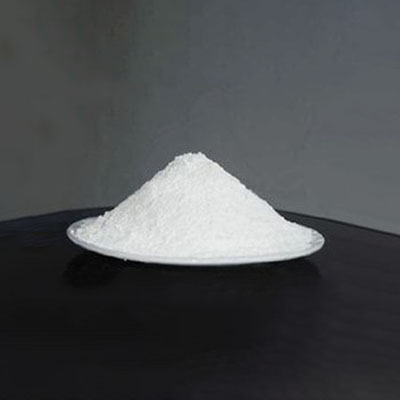
Hexamethylenetetramine, also known as methenamine, hexamine, or urotropin, is a heterocyclic organic compound with the formula (CH2)6N4. This white crystalline compound is highly soluble in water and polar organic solvents. It has a cage-like structure similar to adamantane. It is useful in the synthesis of other organic compounds, including plastics, pharmaceuticals, and rubber additives. It sublimes in vacuum at 280 °C.
Hexamethylenetetramine was discovered by Aleksandr Butlerov in 1859. It is prepared industrially by combining formaldehyde and ammonia. The reaction can be conducted in gas phase and in solution.
The molecule has a symmetric tetrahedral cage-like structure, similar to adamantane, whose four “corners” are nitrogen atoms and “edges” are methylene bridges. Although the molecular shape defines a cage, no void space is available at the interior for binding other atoms or molecules, unlike crown ethers or larger cryptand structures.
The molecule behaves like an amine base, undergoing protonation and N–alkylation.
Application
In most areas of application, Hexamine can be regarded as a special form of formaldehyde. It has the advantage that no water is releases during conversion, e.g. methylation reaction. The following is a brief description of the main areas of Hexamine application.
7.1 Plastics Industry
In a number of systems used in plastics manufacturing, the final hardened state is only achieved by adding a formaldehyde donor, which acts after a time delay.
Phenol formaldehyde resins (novalac) in particular, require Hexamine for hardening purposes.
7.2 Rubber Industry
There are two uses of Hexamine usually in the most finely ground form, as an auxiliary material in the manufacture of tires and technical rubber products
As a vulcanizing agent, Hexamine being a basic aldehydeamine is used as a secondary accelerator. Its main significance is as an activator of other accelerators (mercapto and sulfonamide product among others).
As an adhesion agent, Hexamine as a formaldehyde donor is mixed with resorcinol and silicic acid. The mixture is then directly added to the rubber-bonding compound.
It is vital that all three components are present, since they generate a synergistic effect. The strength of the bond achieved depends on the type of formaldehyde donor and the activity of the silicic acid used.
7.3 Explosives
In its nitrated form, Hexamine is a highly explosive material available under the names Hexogen, Cyclonite and RDX. It is often used in a mixture with TNT and with 3-5% wax added for stabilization.
Explosives , “Slurry, explosives / RDX (hexogen), HMX (octogen), HMTA (hexamethyline triperoxide Amine)”
Octogen: presently the most powerful high-efficiency explosive, is produced from Hexamethylenetetramine according to the Acetic Acid process, and is used for special military purposes.
Hexogen: can be produced either by the Acetic Acid process or according to the conventional Nitric Acid process, and is mostly processed to Compound B.
Nitropenta: a Nitric Acid ester of Pentaerythritol, is obtained by the Nitric Acid process. Apart from military applications, Nitropenta is mainly used in the civil explosives industry to be processed to detonating cords, and it is an essential component of detonating caps.
7.4 Fuel Tablets
Fuel tablets that burn with a non-luminous flame and without smoke, leaving practically no residue, can be produced from Hexamine using mainly wax-like additives. The favorable burning property of Hexamine tablets is of particular interest to the armed forces. These high-energy non-toxin fuel tablets are also used by campers and other groups.
7.5 Urea Fertilizer
Hexamine is used as formaldehyde donor for coating the urea granules to improve the free-flowing.
7.6 Preservative & Anti-Microbial Effect
Hexamine is not a micro biocide by itself, but strongly antiseptic formaldehyde is split-off acid media. As such, it is used as a component in deodorants for external application.
7.7 Corrosion Inhibitor
Adding Hexamine to the pickling solution has proved effective in preventing iron and steel components corroding as far as this is possible during the pickling with mineral acids.
7.8 Textile Industry
Hexamine is used in combination with other products for crease resistant finishes. Further, it improves dyeing speed and acts an activator for chlorine bleaching.
7.9 Foam Manufacturing
Among other product, the aerating agent dini trosopentamethylene tetramine is used in the manufacture of rubber and polyurethane sponges. This agent is manufactured from Hexamine and sodium nitrite in an aqueous solution of acetic acid. Ti is characterized by the extremely finely pored and uniform cell structure of the foam.
7.10 Chipboard Manufacturing
The glue used in the manufacture of chipboard is extracted by condensation by adding hardeners containing acid during the pressing procedure. The most popular hardener is ammonium chloride solution. The hardening solution is buffered with ammonia to prevent the hardening process commencing while the glue is still being applied.
Since it is slightly volatile, a suitable excess of ammonia must be used, which leads to pronounced odor. By adding Hexamine instead of ammonia, the undesirable release of ammonia fumes can be avoided, further, pot life is improved and a uniform hardening is achieved. This is particularly so in the core/ top layer zone.
7.11 Other Known Applications
Hexamine is used in small quantities as a stabilizer for polyvinyl acetate, an acid deactivator with herbicide formulations, in solvent extraction of phenol during tar and oil processing, in the synthesis of glycine, among others.

